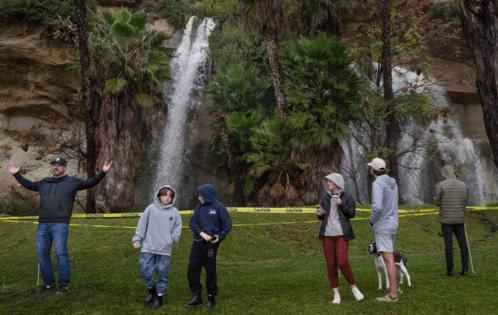'Rivers in the sky' have drenched California, yet even more extreme rains are possible
Published in News & Features
LOS ANGELES — For years, scientists have said that atmospheric rivers can either make or break the water supplies of thirsty California cities and farms.
For the last two winters, a steady succession of these giant “rivers in the sky” have dumped record-breaking and drought-busting precipitation across the state, while simultaneously causing catastrophic floods, landslides and dangerous blizzards.
But now, new research has found that these recent atmospheric rivers pale in comparison to some of the monster storms that battered ancient California — a sobering revelation that suggests to some experts that the state could be revisited once again by such cataclysmic storms.
“Our findings show that atmospheric river activity exceeds what has occurred since instrumental record keeping began,” said Clarke Knight, a U.S. Geological Survey research geographer and the lead author on the study that detailed — for the first time — atmospheric river activity dating back 3,200 years. “This is important because it suggests the latent potential of our area to experience storms beyond those that we have seen today.”
Although few people had even heard of atmospheric rivers just a couple of decades ago, research into the mammoth vapor trails has proved critical to California water planning and public safety.
The study’s findings do not bode well for a state whose flood infrastructure was severely strained last year, when a train of atmospheric rivers breached numerous levees, flooded communities and re-filled once dry Tulare Lake. The findings also up the ante for state efforts to capture stormwater as climate change causes more precipitation to fall as rain instead of snow and ushers in a new era of more frequent and prolonged drought.
Knight and her fellow researchers arrived at their conclusion after analyzing ancient layers of mud from Leonard Lake in Mendocino County. The team was able to determine when more sediment had been pushed into the lake, indicating periods of higher precipitation.
Then, using data for atmospheric rivers over the last 60 years, the researchers found a “strong correlation” between their sediment findings and modern storms, allowing them to model that link through the rest of the mud layers to reconstruct historical atmospheric river activity, Knight said. Their research was published Thursday in the journal Nature.
The research provides the most historical context to date for the state’s rainfall variability, and found that the region “consistently registered extreme precipitation over a 3,200-year period.”
Knight said this new hydrologic data can better inform climate modeling and projections, providing a historical record 20 times longer than what’s been available.
...continued
©2024 Los Angeles Times. Visit at latimes.com. Distributed by Tribune Content Agency, LLC.










Comments